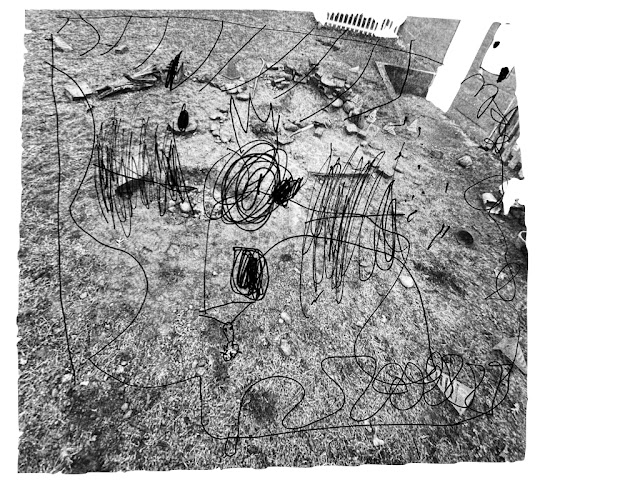Some of the oldest preschool-aged children are making something new in their play yard. They've been digging and moving rocks. There isn't a firm consensus on what the space should be. Taj told me it was sewers for the children to live in like Ninja turtles. Other children talked about it as a "base" or a "house". I'm sure the idea continues to grow and change, and that they call it other things along the way.
The children in this classroom have thought and talked a lot about play that is "peaceful", and play that is "fightful" (called "Warful" by Ramona below). Some children are clear that they like to play fightfully sometimes. These are games that involve big energy, chasing, and sometimes characters who have swords and blasters. Other children will say they don't like fightful games, but you'll see them having fun playing them on occasion. In discussions these children most always take the side that's against frightfulness. Very few children never want to play this way.
Play in this new area of the yard started not long ago and involves a lot of digging and piling of rocks and bricks. The children run in and out and shout when they want someone's attention. It's very exciting!
Wondering what the children's intention might be, Teacher Frances printed out a photograph of the space, and we asked children to draw what they envision.
 |
| Zoey's plan has an ottoman, table and chairs a garden, and a bed for resting. It also has a wall or fence all the way around it. |
Ezra's plan has a brick or rock wall and two chairs.
 |
| Wren included a lot of different levels and places to sit. |
As I watch the work unfold, I wonder if it's important to have a settled idea. I assume they're working toward some intersubjectivity about the goal for this play and work. Do you know about intersubjectivity? When a group has intersubjectivity they understand a common goal, can agree on the tasks and tools they need to achieve the goal and share language around the job. I hope the children will achieve agreement about how to use this space, but I can also see the job as making a place- where the making is more important than anything else. That's why there's so much excitement- "we're together!, we're doing a cool thing!"





Comments
Post a Comment
Please do comment!